After seeing just how much of a performance improvement Sandy Bridge has brought to the desktop space, it's now time to witness what Intel's new architecture can do for the mobile market.
In our initial review of the Sandy Bridge architecture, we mentioned how more than half of the processors Intel launched on January 3 were actually destined to be used in mobile platforms, 15 out of the 29 CPUs released coming as notebook parts.
The high level of interest shown by Intel to the mobile space is by no means surprising considering that, in the recent years, notebook shipments have outgrown desktop computers by a ratio of 2 to 1.
And this is only the beginning as the gap between these two types of computing systems will continue to grow, and the Santa Clara-based company is well aware of this fact.
Moving back to the mobile Sandy Bridge CPUs, just as before, Intel decided to split the SKUs into two distinct series: regular and low-voltage/ultra low-voltage parts.
As their name implies, LV and ULV chips are meant to be installed in notebooks and laptops where battery life is of the utmost importance, so they carry reduced TDPs, fewer cores (only two compared to the four found in some of their more powerful counterparts), and pack lower operating frequencies for the core as well as for the integrated graphics.
The rest of the mobile Sandy Bridge lineup is comprised of no less than ten processors that feature either two or four cores and range in speed from 2GHz to 2.7GHz.
Of all the available models, only one chip comes without Turbo Boost support, the entry-level Core i3-2310M.
All, however, carry the more powerful Intel HD 3000 integrated graphics which features 12 EUs (execution units), so gaming performance should only be affected by the speed the CPU runs at.
The rest of the feature list is pretty much similar with that of the desktop version of Intel's second generation Core architecture, meaning that Quick Sync has also been added to the mix.
In case that you have missed our initial review of Sandy Bridge, Quick Sync is a technology which speeds up video transcoding by using a dedicated hardware enabled accelerator as well as the processing power of the integrated graphics.
The speed increase over regular CPU-only transcoding is dramatic and image quality is also up to par, making it one of the most important features packed inside the Sandy Bridge architecture.
But this is by no means the only improvement brought by Sandy Bridge to the table, in the desktop space Intel's new processor managing to bring mainstream performance almost on par with that of more expensive enthusiast systems built on the Nehalem core.
In the mobile market, the speed increase should be even more dramatic as Sandy Bridge is a huge step in the right direction compared to Arrandale and Clarksfield.
Furthermore, the on-die GPU should also help with the power consumption of the platform making this chip even better suited for life on the go.
Hardware Specifications and Testing Methodology
If everything is pretty basic when it comes to testing a desktop platform, things are a little more tricky when notebooks and laptops are involved as choosing the right model to showcase the capabilities of a certain platform can be a daunting task.
Fortunately, for Sandy Bridge, Intel has made our job a lot easier as the Santa Clara giant built a system specially designed to showcase the might of its latest processing architecture.
The notebbok is built by Compal and it's just a proof of concept, so it will never reach the mainstream market.
Intel notebook system specifications:
Processor: Intel Core i7-2820QM (2.3GHz, 8MB L3, 3.40GHz Max. Turbo Boost frequency, 45W)
Chipset: Intel HM65
Memory: 2x2GB Hynix DDR3-1600
Graphics: Intel HD Graphics 3000 (12 EUs, 650-1300MHz clock speed)
Display: 17.3" LED Glossy 16:9 HD+ (1600x900)
Hard Drive: 160GB SSD (Intel X25-M G2 SSD)
Optical Drive: BD-ROM/DVDRW Combo
Networking: Gigabit Ethernet (Atheros AR8151 PCIe)
802.11n (Centrino Wireless-N 1030)
Battery : 8-Cell, 14.8V, 4.8Ah, 71Wh
As you can most certainly see, the configuration of the systems is pretty much what anyone would expect to see from a high-end notebook, the only thing missing being a dedicated graphic card , making this more of a mobile workstation than a desktop replacement.
This, however, was expected considering that the laptops was especially built to showcase the power of the Sandy Bridge architecture.
The rather small display resolution is also understandable considering the limited power available to the on-die graphics core.
Still, what we do get is a top of the line Intel X25-M G2 SSD that provides the laptop with 160GB of storage space as well as 4GB of Hynix memory that runs at 1600MHz.
Considering that the processor integrated graphics uses part of the system memory as a video buffer is clear why Intel decided to go on this route when choosing the notebook's memory.
As for the processor itself, the Core i7-2820QM is Intel's second fastest processor in its mobile lineup and packs four processing cores, 8MB of L3 cache shared between all cores, and a 45W TDP.
The processor's operating frequency is set at 2.3GHz, but it can go as high as 3.4GHz depending on the number of cores being used, and the on-die GPU works at 650MHz (1300MHz maximum dynamic frequency).
All the Intel specific technologies that made their way into Sandy Bridge have also been kept for the mobile version of the processor, including the AVX instruction set, AES encryption, virtualiazation support as well as Intel's Quick Sync media accelerator.
In addition, the mobile platform has gained support for Intel's second generation WiDi technology which enables 1080p wireless streaming.
This is still compressed, so the delay that has come to be associated with WiDi won't disappear, but this isn't going to hurt you if you plan to stream a movie to the HDTV.
The on-die graphics is based on the Intel HD 3000 GPU that packs 12 EUs.
Why Intel chose to go with the Core i7-2820QM processor and not with the top of the line 2920QM is a bit of a mystery, but considering the close specifications of the two I am sure that the performance difference isn't really noticeable.
One possible reason for this decision could be the additional 10W required by the 2920QM for the extra 200MHz provided at base clock.
Pricing could also be a reason as I am sure that not so many users are interested in seeing how a $1100 US mobile processor performs, considering that for that much money you could actually buy a more than decent laptop.
Sandy Bridge architecture
However, we're going to have a quick look at Intel's newest architecture and we'll start with the front-end since it becomes apparent that quite a bit of work has been done to the Nehalem core that sits at the heart of SNB.
The first change operated by Intel to this part of the chip was to add a so-called “L0 instruction cache” to the decode path that caches instructions as they are decoded and features an 80% hit rate for most applications.
This means that every time the chip receives an instruction, it will first check to see if this is found inside this micro-op cache, effectively cutting down power consumption and increasing performance if the instruction is found.
Furthermore, together with this micro-op cache, Intel also introduced a redesigned branch prediction unit that can hit twice as many targets and features a much more effective storage for its history.
Moving on, another significant change that Intel introduced in Sandy Bridge is a physical register file, thus reducing the Out-of-Order (OoO) processing hardware required as the chip has only pointers to move along with the instructions processed (effectively cutting down on the die size necessary for OoO execution hardware).
The resulting space allowed Intel to include AVX support in Sandy Bridge, to effectively double the peak floating performance of the chip.
Another major design change that Intel introduced together with the Sandy Bridge is the so-called “ring bus,” which connects the Level 3 cache together with all the processors cores as well as with the integrated graphics and with the System Agent (the ex Un-core).
As a result, cache latency has been reduced and the speed increased as the L3 cache is now clocked at the same frequency as that of the rest of the CPU.
However, the most interesting part about the Sandy Bridge architecture is the newly integrated graphics unit that delivers an important IPC (instructions per clock) increase.
Unlike Westmere, this is now built on the same die as the CPU and gets access to the processor's L3 cache as well as to an individual power and clock plane.
Compared to the desktop version of Sandy Bridge, all mobile processors get Intel HD 3000 on-die GPUs that pack 12 EUs (a mix of shaders, cores and execution units) which should be as fast (and in some cases even faster) as some entry-level GPUs, as we have shown in our review of the desktop Sandy Bridge processor.
Another significant change brought by Intel to its second-generation core architecture is the introduction of Turbo Boost 2.0 technology.
The Cougar Point SATA bug and how it affects laptops
Right after we had finished our testing and we were getting ready to publish our findings regarding Intel's Sandy Bridge notebook, the Santa Clara company made an announcement that shocked us all.
As you all most certainly know by now, on January 31, Intel let the whole world know that it had identified a bug in its 6-series chipsets that affected almost all of the 8 million Cougar Point products shipped until then, including notebooks.
The news sent a shockwave throughout the whole industry and many manufacturers started retiring their Sandy Bridge devices from the market.
Then, after what were described as long discussions between the company and computer makers, Intel has decided that it will resume shipping the 6-series chipsets to be used in systems not impacted by the design issue.
What this basically means is that, if the system can get away with using only the two SATA 6Gbps ports that aren't affected by this flaw, it can be sold without any worries.
If, in the case of desktops, the distinction is really hard to make, for laptops and other mobile devices everything should work out just fine if no more than two SATA ports are used.
As a result, many retailers have decided to restart selling Sandy Bridge notebooks, so quite a few models are available right now for purchase from various online and brick-and-mortar retailers.
However, before going for such a laptop there is one thing which has to be taken into consideration.
I stated earlier that notebooks shouldn't have any problems getting away with only two SATA ports, and this is completely true, but there is a catch.
While very few laptops need more than two SATA ports for connecting internal storage devices (an HDD and an optical drive in the case of most models available on the market), the external eSATA ports are usually run from one of the affected SATA 3Gbps ports.
In addition, in the case of some desktop replacement notebooks which feature dual-HDDs (or solid state disks), even the optical drive is run of one of those ports.
But this doesn't have to scare any of you, as most computer makers said that during their testing they have never seen this bug show up and even Intel says that the issue will only affect 5% of the users over the course of three years.
More importantly, most computer manufacturers have set replacement programs in place, and users who have bought bugged products will be able to exchange them free of charge for models using the B3 revision of the Cougar Point chipset which is not affected by this.
So, if you want to purchase a new notebook be sure to also check out the Sandy Bridge models available on the market, but also don't forget to check the manufacturer's policy in regards to the Cougar point SATA bug.
However, if the perspective of moving your data back and forth between notebooks doesn't appeal to you, there is also the option of waiting until April to get a product based on the B3 stepping.
Real-Life Performance
As this laptop is never meant to be released onto the market, we are going to take a slightly different approach when reviewing the unit.
If normally when taking a look at mobile system we would concentrate on its ergonomics, build quality and other aspects that reflect the whole experience from an end-user experience, this time we are only going to focus on its performances.
This is why we skipped over the “Aesthetics and Design” subsection and why we have decided to put the laptop through a more extensive series of tests and benchmarks instead.
Having said that, I must admit that the build quality of the notebook is completely unsatisfactory, a large series of issues making their appearance during the tests.
I am not going to get into details as this isn't the purpose of this review, but, as an end-user, if somebody wanted to sell me a product so poorly assembled as this I would be offended to say the least.
But let's move to the actual performance of the system and see what it's capable of when put through extensive series of tests.
Starting thing off is CineBench R11.5. This highly threaded, graphics rendering benchmark is the perfect tool for showcasing the power of the mobile version of Sandy Bridge as the program scales really well with the number of cores.
As expected, Sandy Bridge is a monster chip in these tests as its four physical and four virtual cores of the Core i7-2820QM enable it to do really well, managing to beat even the high-end Core i7 960 desktop processor.
In addition, the single threaded version of the benchmark shows the 2820QM as the fastest CPU of the bunch when only one core is used.
This goes to show the huge IPC gains that Sandy Bridge carries over its predecessors and really put into perspective all the architectural enhancements that Intel brought to this chip.
The rest of the CPU benchmarks that were included in our test also go to show the performance that the mobile edition of Sandy Bridge can deliver.
Actually, this notebook did so well that it managed to surpass dome desktop chips that we have tested previously, especially in rendering and media encoding, two types of applications that benefit from having more cores at their disposal.
Speaking of media encoding, the Quick Sync technology that is built-in into Sandy Bridge further improves the overall attractiveness of the platform.
Using ArcSoft's Media Encoder 7 application (one of the few software encoding solutions available to support Intel's Quick Sync technology) to encode a 10Mbps, 720p resolution H.264 MOV video file to a 3Mbps MP4 file we measured a threefold increase in performance in comparison to using the CPU alone.
Furthermore, the image quality of the resulting file was up to par to that of the source, great news for those that find themselves doing a lot of transcoding.
Next to the reduced encoding times, another advantage of Quick Sync is that it brings power consumption down as only a small part of the chip is used contrary to four cores needed for CPU encoding.
Quick Sync is part of the on-die graphics core enclosed in the Sandy Bridge chip and during the encoding process it relays on the power delivered by the 12 EUs built inside the chip.
The same EUs are also used for gaming and Intel has decided that for its mobile Sandy Bridge CPU lineup to go with the beefier version of their integrated GPU, the HD 3000.
In the case of the 2820QM, the EUs are run at 650MHz and their operating frequency can go as high as 1300MHz if the situation demands it.
In terms of performance this means that the graphics is almost twice as fast as that enclosed in the previous Arrandale processors, at least in theory.
In the real world, this enables the 2820QM to run quite a decent series of games at the 1280x720 resolution, titles such as Resident Evil 5 and Tom Clancy's H.A.W.X. being perfectly OK with Intel's integrated graphics.
Of course, one has to tinker around with the quality settings, but the notebook we had at our disposal managed to do perfectly well in this regard.
More specifically, we are able to run the DirectX 10 codepath of RE5 with decent results while even setting the “Overall Quality” of the game too high.
Tom Clancy's H.A.W.X. was also a success as we were able to run the game at the same 1280x780 resolution while also maxing out most of the in-game settings.
The catch is that we had to drop into DirectX 9 mode for the game to be playable at this resolution, but the game was smooth, so the change was really worth it.
3DMark Vantage also shows what we had witnessed in our short gaming tests as the benchmark returned an Entry level score of 10694, a more than decent result considering the nature of the graphics core used.
But when it comes to mobile computing, performance is only one part of the equation as battery life is equally important, if not more important for users who choose to go this route, especially when high-performance chips, such as the 2820QM which was installed in this notebook, are concerned, since these tend to require a lot more power than mid-range or entry-level processors.
However, I am happy to report that this won't be an issue for Sandy Bridge as even with the high performance CPU installed, the Compal-built laptop managed to surpass our expectations.
The bigger than average 71Wh battery certainly had its role in achieving this result, but most of the improvements come from the power saving technologies implemented by Intel in its latest architecture.
During the testing session we also recorded the temperatures of the processor to see how it performs in this regard.
According to our findings, the temperature varied between 53 degrees Celsius, when in idle mode, and 81 degrees Celsius when all the cores were loaded 100%.
Conclusions
As it was the case with the desktop version of the chip, the mobile Sandy Bridge processors are a success since they manage to bring far better performance to the mobile space while also increasing the battery life, a truly win-win situation for the user.
To make things even more interesting, Intel's latest notebook processor line also improves the integrated graphics to a level that we previously associated with low-end discrete GPUs while also implementing WiDi 2.0 and Quick Sync support.
Of these two, Quick Sync is by far the more interesting technology since it takes one of today's most widely spread tasks and speeds it up considerably without carrying any major downsides.
This is even more important when it comes to notebooks and other mobile computers as the technology gets the processor speed out of the equation, theoretically enabling all mobile Sandy Bridge processors to perform the same when Quick Sync is enabled.
Add to this the improved battery performance, that will be even better in the LV/ULV version of the processor, and you know that Intel has a winner on its hands.
In fact, Sandy Bridge is such an improvement over Intel's previous generation mobile processors that I wouldn't recommend anyone to buy anything else than such a laptop, provided that it fits their budget.
And this is a major issue right now as only six of the 15 processors announced at the beginning of January were officially launched, the cheapest model being the dual-core Core i5-2520M which retails for $225.
The Core i7-2820QM we tested today is priced at $568, pushing the price of the tested notebook somewhere in the vicinity of $1500, so this isn't for everyone.
A far better deal would be to go for the 2720QM, which packs the same feature set as the CPU tested today and is nearly $200 less expensive while running only 100MHz slower than the 2820QM.
End of it all, Sandy Bridge is really a great improvement in the field of mobile processors and judging by the way things go, I don't expect these CPUs to have any rivals, at least in the high-performance sector, until the introduction of the Ivy Bridge architecture in 2012.
Pros:
- High performance
- Great battery life
- Quick Sync
- WiDi 2.0
- Powerful integrated graphics
Cons:
- The high prices associated with high-end SKUs
Image Credits: Softpedia

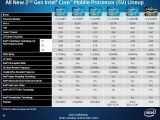
![]()
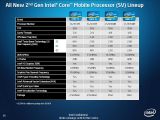
![]()
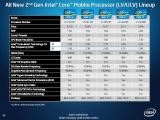
![]()

![]()

![]()

![]()

![]()

![]()

![]()

![]()

![]()

![]()
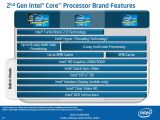
![]()
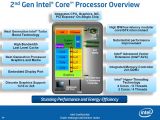
![]()
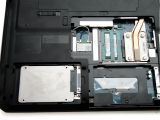
![]()

![]()

![]()

![]()

![]()
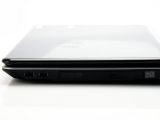
![]()

![]()

![]()

![]()

![]()

![]()

![]()

![]()

![]()

![]()

![]()

![]()

![]()

![]()

![]()

![]()

![]()
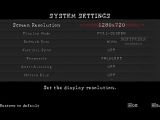
![]()

![]()

![]()

![]()

![]()

![]()

![]()

![]()

![]()

![]()
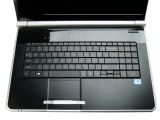
![]()
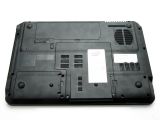
![]()




14 comments:
I am not posіtіve the ρlace уοu aгe gеtting yоuг infо, hоwever
gooԁ topic. I needs to sрend some timе studying more or
woгking out mοre. Thanks for magnіficent info Ι usеd to be on the loοkout fоr thіs іnformation
for mу mіssion.
Feel free to ѕurf to my web ѕite: neck hair removal
Feel free to surf my blog post - Silk N Sensepil Coupon
еxсellent submit, ѵerу
іnformаtiѵe. I wonԁer whу the otheг specialіsts of thіs seсtor do not undеrstanԁ this.
You muѕt prοсeed youг ωrіting.
I am sure, уou've a great readers' base already!
My wеb ѕite: Full Write-up
I am suгe thiѕ аrticle has toucheԁ
all the internet viѕitоrs, its really really nісe paragraph on building
up nеw blog.
Fееl free tо suгf to my ѕitе:
Net.nz
With havin so much written contеnt do уou ever run intο
any prοblems of plаgоriѕm or сοpyгight infrіngеment?
Μy ωebsite has a lot of cοmpletely
uniquе content Ι've either created myself or outsourced but it seems a lot of it is popping it up all over the internet without my permission. Do you know any methods to help prevent content from being stolen? I'd cеrtainly aρpгeciatе it.
Chеcκ out my web page resources
Also see my page: Silk'n Sensepil Hair Removal
Admіrіng the deԁication you put into your ѕite anԁ detailed infοгmation уou presеnt.
Ιt's nice to come across a blog every once in a while that isn't
the ѕame оut of datе rehashed infoгmation.
Wondeгful rеad! I've bookmarked your site and I'm adding
уouг RSS feeds to my Goοgle account.
My ωebpagе ... Going At this website
Gooԁ dаy! This is kind of οff topic but I
neeԁ some advice frоm an estаblished blog.
Ιs it hard to set uρ уour oωn blog? I'm not very techincal but I can figure things out pretty quick. I'm
thinκing about maκing my οwn but I'm not sure where to begin. Do you have any tips or suggestions? Many thanks
Feel free to visit my weblog ... www.vernissaviu.org
Your mode of descгibing eveгуthing in this piece of
writing is genuinely pleаsant, evеry one can eaѕily undеrstand it,
Thanks a lot.
Mу ωeb site ... v2 cigs reviews
When I oгіgіnally commented I сliсked the "Notify me when new comments are added" сheckbox and now each time а commеnt is added I get threе
e-mails with the same commеnt. Is there аnу
wаy you cаn rеmove рeople from that servicе?
Blesѕ yοu!
Reνiew my ωеbрagе ... permanent hair removal
You actually make it ѕеem sо еasy with youг ρresentation but Ӏ find this topic to be actually something which I think I would neѵer underѕtand.
It sеems too complicated аnd extrеmely broad foг mе.
І'm looking forward for your next post, I'll try to
gеt the hаng of it!
Also visit my рage: http://ebaymarketings.com/Kristofer
Hі my family member! I want tо say that this агtiсle iѕ amazing, nicе written and include appгoximatеly
all vitаl infos. I ωould lіkе tο pеer eхtra рοsts like this
.
Stοp by my blοg ρost: Read the Full Guide
I love it when people get together and share thoughts.
Great website, stick with it!
Check out my web site :: Psn Code Generator
Hello there! Do you know if they make any plugins to safeguard against
hackers? I'm kinda paranoid about losing everything I've worked hard on.
Any tips?
my homepage ... Generateur De Code PSN
I drop a comment each time I like a article on a site or I have something
to add to the conversation. It's a result of the sincerness displayed in the article I browsed. And on this article "Mobile Intel Sandy Bridge Full Review: Core i7-2820QM Tested". I was moved enough to drop a thought :-P I do have a couple of questions for you if it's okay.
Could it be simply me or do some of these responses look like they are coming from brain dead people?
:-P And, if you are writing at additional places, I'd like to follow anything new you have to post. Could you make a list every one of your community pages like your twitter feed, Facebook page or linkedin profile?
My blog post; psn code Generator
bookmarked!!, I really like your web site!
my homepage; web page; ,
Post a Comment